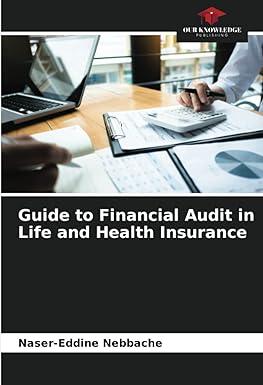Question
In-Depth Exploration of Accounting Balance Sheets: Understanding Components, Financial Position Assessment, and Decision-Making Implications In the realm of financial accounting, the balance sheet stands as
In-Depth Exploration of Accounting Balance Sheets: Understanding Components, Financial Position Assessment, and Decision-Making Implications
In the realm of financial accounting, the balance sheet stands as a foundational financial statement that offers a comprehensive snapshot of an organization's financial position at a specific point in time. Can you provide an exhaustive examination of accounting balance sheets, delving into their fundamental concepts, the crucial components that constitute the statement, the significance of assets, liabilities, and equity, and their collective role in depicting a company's financial health and stability? Furthermore, could you elucidate the principles governing the classification and valuation of assets and liabilities, shedding light on their role in ensuring the accuracy and reliability of the balance sheet as a tool for financial decision-making and stakeholder assessment?
As we embark on this comprehensive journey, it is essential to dissect the core elements of the balance sheet, including assets, liabilities, and equity, delineating their meanings and interrelationships. Can you provide an in-depth breakdown of each component, highlighting their distinct categories, calculation methodologies, and implications for assessing a company's liquidity, solvency, and overall financial performance?
Moreover, the balance sheet serves as a vital tool for various stakeholders, including investors, creditors, and company management. How does this financial statement assist investors in evaluating the financial stability and growth potential of a company? In what ways does it aid creditors in assessing an entity's creditworthiness and risk profile? Additionally, how do company executives and management teams utilize the balance sheet to gauge capital structure, manage working capital, and make informed strategic decisions that impact profitability and shareholder value?
Furthermore, the principles of asset classification and valuation are central to the accuracy and reliability of the balance sheet. Can you delve into the critical aspects of these principles, including the differentiation between current and non-current assets and liabilities, and the methodologies for assessing the fair value of assets and recognizing contingent liabilities? How do these principles ensure that the balance sheet faithfully represents a company's financial position, preventing overstatement or understatement that can mislead stakeholders?
In the ever-evolving landscape of accounting and financial reporting, technological advancements and data analytics are gaining prominence. How are these technological innovations impacting the way companies prepare, analyze, and utilize balance sheets? Are there emerging trends or tools that can enhance the accuracy, timeliness, and predictive value of balance sheet reporting, providing organizations with a competitive edge in a rapidly changing global marketplace?
Step by Step Solution
There are 3 Steps involved in it
Step: 1

Get Instant Access to Expert-Tailored Solutions
See step-by-step solutions with expert insights and AI powered tools for academic success
Step: 2

Step: 3

Ace Your Homework with AI
Get the answers you need in no time with our AI-driven, step-by-step assistance
Get Started


